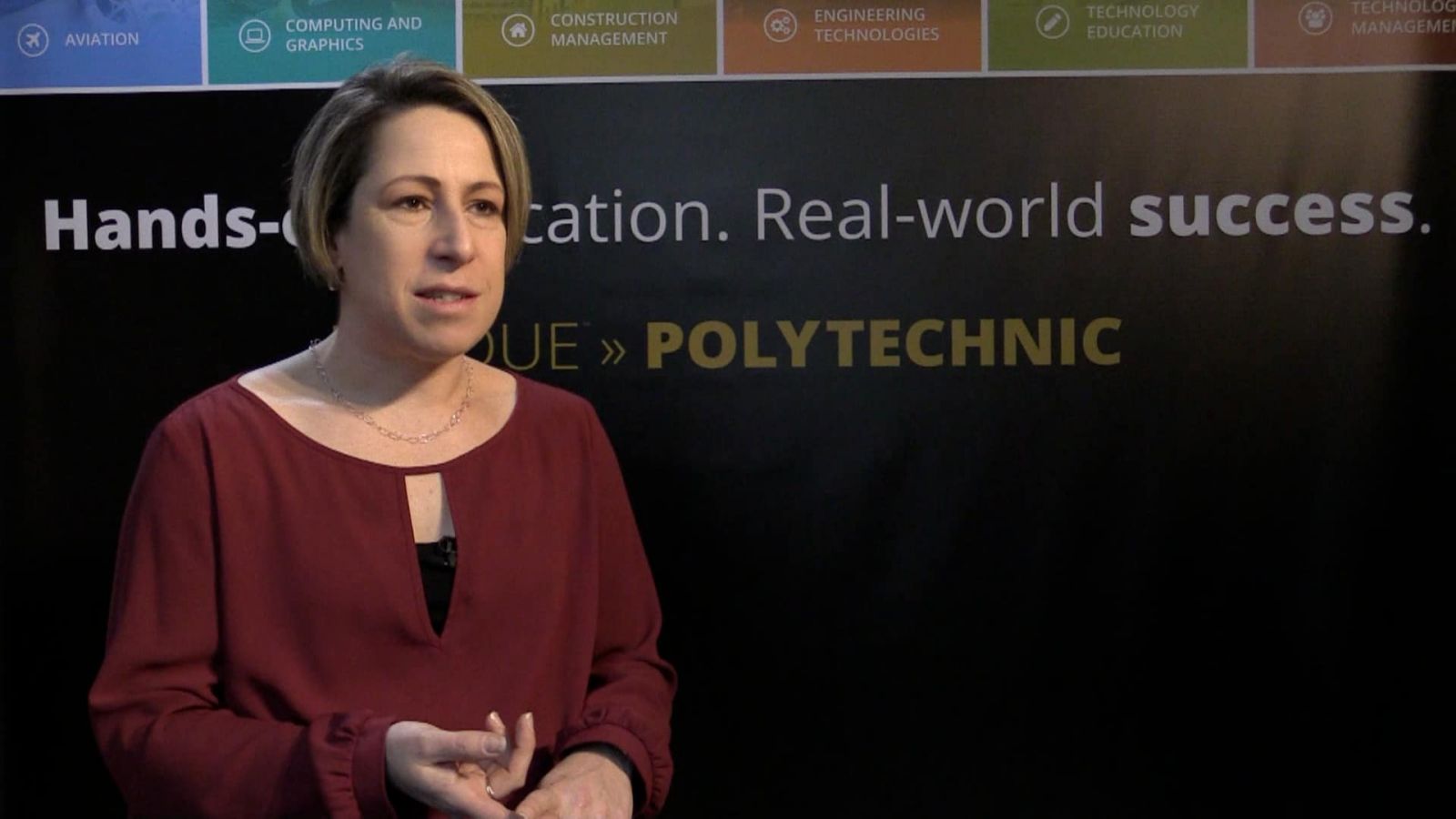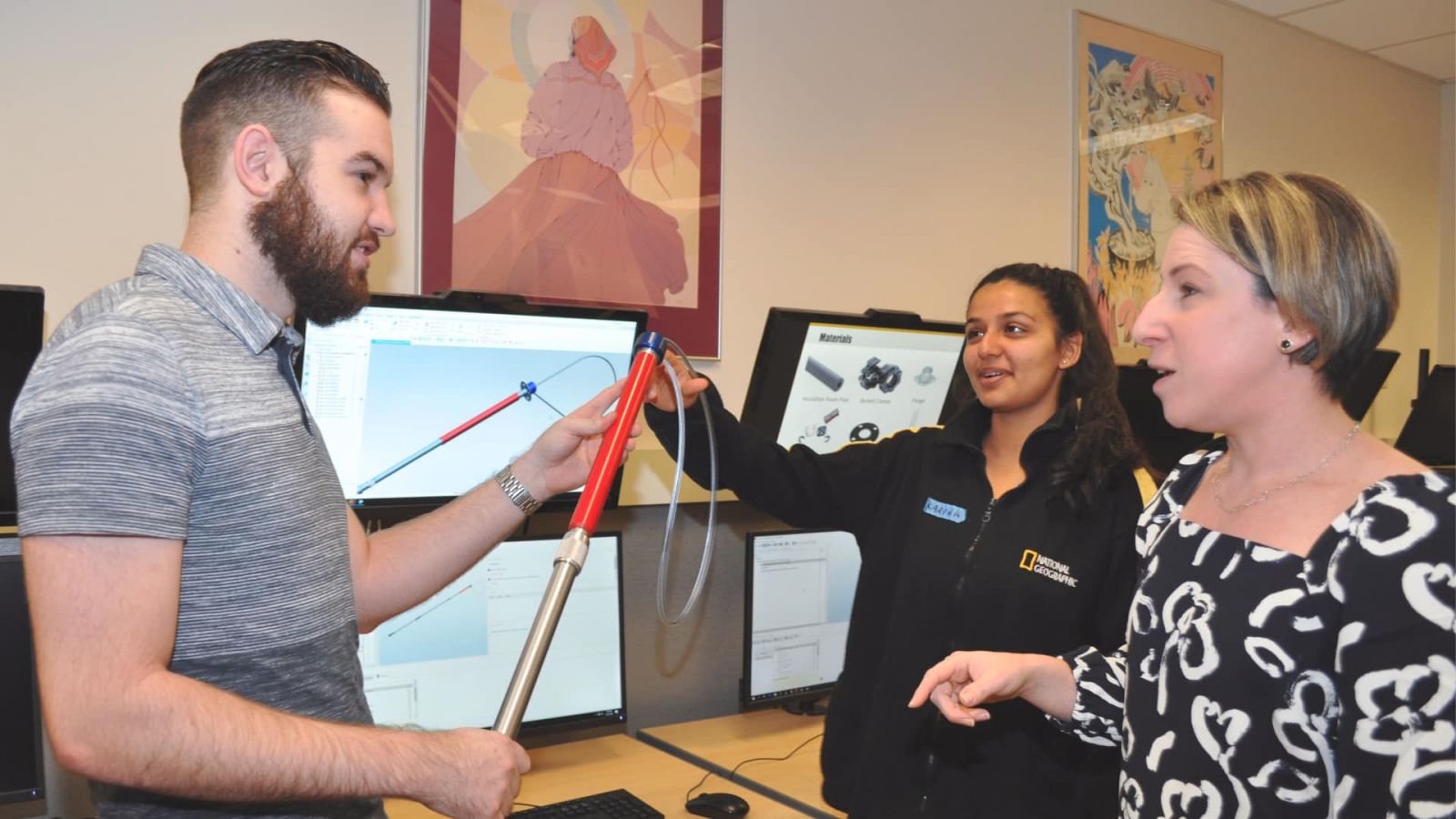
If you are not able to be physically present with students in a classroom, how do you handle your teaching duties? How will your students learn?
As the global outbreak of novel coronavirus 2019 (COVID-19) continues, officials at schools of all levels, from K-12 to universities, are wondering how instruction and learning can continue if teachers, professors and students do not come together in schools, classrooms and laboratories. Some school systems are canceling classes and/or scheduling e-learning days. Purdue, Ohio State, Indiana, Notre Dame, Stanford, Washington, Harvard and Princeton are among the universities that are temporarily turning to virtual learning as a way for instructional activities to continue while minimizing potential exposure to the coronavirus.
But for Rosemary Astheimer, assistant professor of practice in Purdue University’s Polytechnic Institute, remote teaching is business as usual.
Because Astheimer lives near Boston, Mass., and leads computer graphics technology courses daily for students at Purdue’s main campus in West Lafayette, Ind., teaching remotely is a logistical necessity. Techniques that instructors employ during the COVID-19 situation, such as recording lectures on video, could actually improve the teaching and learning experience even after in-person class meetings resume, she said.
For Rosemary Astheimer, remote teaching is business as usual.Astheimer specializes in computer-aided design (CAD) and model-based definition (MBD). Her students learn to design new products inside virtual, 3D-modeled environments via CAD software such as PTC Creo, Catia and SolidWorks from Dassault Systèmes, or Siemens NX. Then they build actual prototypes to realize and test their designs. Prototyping also provides experience in how the data they’ve authored can be used downstream to manufacture products, as done in industry.
Videos replace passive lectures, improve retention
Each week, Astheimer posts videos in which she discusses learning objectives for that portion of the semester and demonstrates techniques students will use in their CAD software. She also provides detailed written instructions that her students use to practice those techniques.
Students watch her videos before attending what would have been lecture classes — and, since Astheimer teaches remotely, she and her students attend those specific meetings virtually via a Webex video conference. All of Astheimer’s class sessions are used for interactive discussions, rather than passive note-taking, and/or active, hands-on learning and problem-solving.
During six years of teaching remotely, Astheimer has learned that most students like the lecture-on-video format. “They can watch when they’re ready to learn,” she said, “fitting it in when they have time. Attending lectures at 7:30 in the morning is not optimal for college students. Watching videos is more convenient for them.”
Being able to view and read instructional materials repeatedly, as needed, is key to comprehension and retention of learning objectives, Astheimer said. Having videos available in advance eliminates the need for professors to repeat portions of lectures that students misheard, especially for those who aren’t the best note-takers.
“This method is suited to different learning styles for those of us who need to hear things more than once to really understand the concepts,” said Astheimer.
Astheimer favors this “flipped classroom” approach to instruction that Purdue promotes.
“Rather than spending your valuable face-to-face time delivering a monologue, we can have a real discussion, and we can solve real problems together.”“Rather than spending your valuable face-to-face time delivering a monologue,” Astheimer said, “we can have a real discussion, and we can solve real problems together.”
One-to-one interaction, remotely
Providing one-to-one support for her students remains a priority. They must present project designs to her early in the semester and their completed work at semester’s end.
“They have access to me via Webex videoconference if they need me, but most are able to get through their work without that assistance,” said Astheimer. “I do also require them to get on a Webex with me once each week because it’s important to have some interaction and face time. It’s a chance for me to talk about things that come up or to remind them about assignments. Some issues aren’t always easy to deal with in email.”
Astheimer and her students also use GroupMe, a group chat tool, to share information and to provide guidance and peer support. “It is a very active conversation, and it provides another way to get to know each other personally as well,” she said.
It’s not necessary for Astheimer or her students to be perfect the first time, whether recording a video lecture or designing a student project in CAD software.
“When I’m recording a software demo and make a mistake, I don’t take it out of my recording,” Astheimer said. “I want them to see that we all make mistakes. You can go back and undo it, and it’s not a big deal.”

To help guide students with building real-world prototypes of their design projects, Astheimer travels from Massachusetts to Indiana to attend occasional class meetings in person, typically in the first and last weeks of each semester. But much of her CAD-oriented curricula is well suited to teaching remotely.
“I really don’t see many situations in which the students are absolutely stuck,” she said. “They can email me their files and I can take a look, or we can hop on an online meeting and look at it together. It’s worked really well.”
Astheimer will continue to use the same one-to-one remote communication methods with her computer graphics technology students while in-person class meetings are suspended.
Time invested by instructors now pays off in time savings later
Preparing videos and other instructional materials for teaching remotely usually takes time and effort, Astheimer said, but time invested up front potentially results in time saved later.
“It’s especially helpful if you have more than one lab section,” said Astheimer. “I usually have two or three sections, and I worry about (accidentally) holding back important information from one. A benefit of recording is that you deliver consistent content.”
Instructors who teach the same course in multiple semesters realize more time savings by reusing earlier recordings. As long as the concepts and technology remain up-to-date, recordings and materials can be reused.
“I am always learning new things, and I want to bring that to class,” Astheimer said. “I try to be smart about how I record so that videos can be easily improved.”
Astheimer discussed her approach to teaching remotely in a recent episode of Techies Today, the Purdue Polytechnic Podcast. She covered the benefits and challenges of recording lectures on video, how she selects real-world projects that students design and build each semester, and her strategy for assigning students to teams. Astheimer also discussed how remote teaching could expand course offerings at Purdue Polytechnic’s other locations around Indiana and create free time for faculty colleagues to focus on other improvements to curricula. Listen to the episode in popular podcast apps or online, or watch the interview on YouTube.
For more information about the podcast, see polytechnic.purdue.edu/techiestoday.
Additional information
- Things you need to know about COVID-19 (Purdue News)
- Teaching remotely (Purdue University Innovative Learning Team)
- Audio podcast: Techies Today Episode 010: Rosemary Astheimer, Flipping the Classroom
- Video: Rosemary Astheimer, Flipping the Classroom – Techies Today 010 (YouTube)
- Techies Today, the Purdue Polytechnic Podcast
- Avon Community Schools near Indianapolis to close the entire corporation for two weeks after second student tests positive for COVID-19 (WLFI/WTHI)
- Coronavirus threat cancels classes at two major U.S. universities, with more expected to follow (MarketWatch)
- Universities across the U.S. are canceling in-person classes due to coronavirus (CNN)
- Coronavirus disease 2019 (COVID-19) (Center for Disease Control)
Audio podcast
Video
